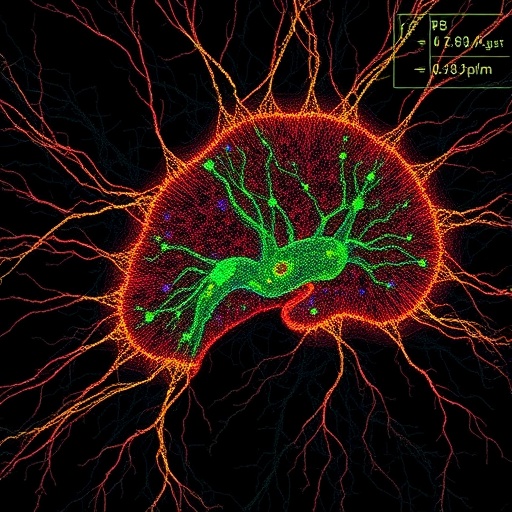In a groundbreaking study published in the Journal of Perinatology, researchers have unveiled significant disparities in how different medical specialties manage febrile neonates receiving prostaglandin E1 therapy. This revelation sheds light on the critical variability in clinical approaches toward one of the most vulnerable patient populations—newborn infants presenting with fever while undergoing this complex treatment. The implications for neonatal care, antibiotic stewardship, and long-term outcomes are profound, calling for a unified, evidence-based protocol to optimize management and mitigate potential risks.
Prostaglandin E1 (PGE1) remains a cornerstone in the treatment of certain congenital heart defects in neonates, functioning as a crucial vasodilator that maintains ductal patency before surgical correction. However, its administration introduces clinical complexities, particularly because neonates on PGE1 are at heightened risk of developing febrile episodes. Fever in this patient cohort may signal anything from benign post-treatment reactions to life-threatening infections, posing a daunting diagnostic and therapeutic challenge for intensivists, neonatologists, and cardiologists alike.
The study, led by Morag et al., meticulously analyzed clinical practices across several specialties, assessing variabilities in diagnostic evaluation, antibiotic usage, and hospital admission criteria. It found that while neonatologists tended to adopt a more conservative strategy—favoring extended observation and targeted lab work before initiating antibiotics—cardiologists and pediatric intensivists often preferred immediate empirical antibiotic therapy, reflecting divergent risk assessments and clinical heuristics ingrained in their respective training and experience.
One critical finding underlined in this research is the lack of standardized guidelines governing the febrile neonate on PGE1 therapy. Due to scarce direct evidence correlating specific clinical signs to infection risk in this unique population, treatment decisions are often based on extrapolated data or institutional tradition, leading to inconsistencies. Such discrepancies are more than academic; they directly impact antibiotic exposure rates, length of hospital stay, and healthcare resource utilization.
Understanding the pathophysiology behind febrile reactions in neonates on prostaglandin E1 is crucial to contextualizing these management differences. PGE1’s systemic vasodilatory effects can mimic infectious responses by triggering inflammatory cytokine cascades, causing fever and other systemic signs without underlying infection. Distinguishing between these physiologic responses and genuine sepsis forms the crux of the clinical dilemma. Unfortunately, current biomarkers and diagnostic tools lack the specificity necessary to definitively separate these clinical pictures, fueling divergent clinical decisions.
Furthermore, antibiotic stewardship emerged as a pivotal point of contention. Neons receiving PGE1 who develop fever are at elevated risk for invasive infections, given their compromised physiology, yet overuse of broad-spectrum antibiotics is equally problematic. Prolonged antibiotic courses raise the risk of antimicrobial resistance, disrupt developing gut microbiota, and expose neonates to drug toxicity. The inter-specialty variance described in this research reflects an ongoing tension between the imperative to ‘do no harm’ from untreated infection and the equally imperative aim to avoid unnecessary antibiotic exposure.
The methodology utilized by Morag and colleagues involved a combination of retrospective data review and structured clinician surveys encompassing neonatology, pediatric cardiology, and intensive care units across multiple tertiary centers. This approach allowed the research team to capture both quantitative patient outcome metrics and qualitative insights into the rationale underpinning divergent management styles. Notably, the study incorporated multivariate analyses adjusting for confounding variables, thus strengthening the generalizability of their findings.
One surprising revelation was that neonatologists were less likely to initiate antibiotics immediately yet did not observe correspondingly higher infection-related morbidity or mortality, suggesting that cautious management with close monitoring may be both safe and effective in certain clinical scenarios. Conversely, the more aggressive approach by cardiologists and intensivists, while reducing latency to antibiotic initiation, resulted in more frequent antibiotic exposure and longer hospital stays. This finding fuels an urgent debate over balancing vigilance against overtreatment.
In addition to clinical management differences, the study exposed variations in diagnostic protocols such as the use of lumbar punctures, blood cultures, and imaging studies. Some clinicians favored upfront comprehensive sepsis workups, while others advocated for a tiered approach, reserving invasive diagnostics for those with worsening clinical signs. These discrepancies underscore the urgent need for research into predictive markers that can stratify infection risk early and accurately in this vulnerable population.
Moreover, the timing and criteria for hospital discharge also varied significantly, with neonatologists tending toward more extended observation periods to ensure stability post-fever resolution, while other specialists favored earlier discharge coupled with outpatient follow-up. Such differences have implications not only for patient safety but for healthcare economics and family burden, highlighting the broader impact of non-standardized care pathways.
Importantly, this research invites a reexamination of existing protocols and guidelines surrounding febrile neonates on PGE1, signaling a transformative potential if an interdisciplinary consensus can be achieved. By integrating insights across pediatrics, cardiology, infectious disease, and pharmacology, future guidelines could better delineate risk categories, optimize antibiotic timing and duration, and harmonize diagnostic workups.
The study also calls attention to the need for advanced diagnostic technologies. Emerging modalities such as rapid molecular pathogen detection, host-response transcriptomics, and novel biomarkers hold promise in resolving the diagnostic ambiguity that currently fuels divergent clinical decisions. These tools could enable tailored, precision-based management paradigms, reducing unnecessary antibiotic use while safeguarding against missed infections.
Clinically, the research underscores the imperative for continuing education and interdisciplinary forums where neonatologists, cardiologists, and intensivists exchange perspectives and develop shared care algorithms. Such collaboration fosters mutual understanding of differing risk thresholds and psychosocial factors influencing decision-making, paving the way for more cohesive, patient-centered care.
Not least, this study’s findings echo broader themes relevant to neonatal care—where clinical uncertainty is high, and consequences of both action and inaction are profound. Febrile neonates, particularly those with congenital cardiac anomalies on specialized treatments like PGE1, embody a nexus of diagnostic complexity, therapeutic nuance, and ethical responsibility that demands continual refinement in practice and research.
As the medical community digests these findings, it becomes increasingly clear that the path forward lies in harnessing multidisciplinary expertise, embracing technological innovations, and committing to robust clinical trials that can illuminate optimal strategies for this fragile population. In doing so, the twin aims of reducing neonatal morbidity and optimizing resource utilization may be simultaneously advanced.
Ultimately, the study by Morag and colleagues represents a clarion call to address variability in clinical practice with rigor and empathy, recognizing that behind every procedural difference lies a neonate whose outcomes hinge on the decisions made in critical moments. As research continues to evolve, so too must our collective approach, ensuring that every febrile neonate on prostaglandin E1 receives care that is evidence-based, equitable, and exquisitely attuned to their unique clinical context.
Subject of Research: Inter-specialty differences in clinical management strategies for febrile neonates receiving prostaglandin E1 therapy.
Article Title: Inter-specialty differences in the management of febrile neonates on prostaglandin E1.
Article References:
Morag, S., Lowenthal, A., Abuelhija, H. et al. Inter-specialty differences in the management of febrile neonates on prostaglandin E1. J Perinatol (2025). https://doi.org/10.1038/s41372-025-02512-w
Image Credits: AI Generated
DOI: 24 November 2025
Tags: antibiotic stewardship in neonatologycongenital heart defects in neonatesdiagnostic evaluation of febrile infantsevidence-based protocols in pediatricsfebrile neonate carehospital admission criteria for neonatesinterdisciplinary approaches in neonatal carelong-term outcomes for febrile neonatesneonatal fever managementprostaglandin E1 therapyrisk management in neonatal carevariability in clinical practices





